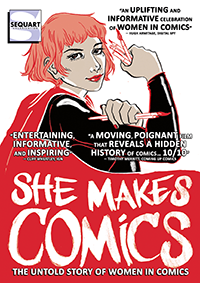Among my other duties for A-Kon is administering the social media pages, the Facebook group in particular. Recently there was an interesting debate on the use of cosmetics and other techniques to alter one’s skin color for cosplay. Essentially, comments fell into two groups. The first justified the practice as being true to the character. The other decried the practice as racism. Both made solid points that are worthy of investigation.
First we should look at the arguments about portrayal accuracy. Cosplayers dress up as their favorite characters for reasons ranging from simply liking their role in a favored series all the way to identifying with the character intellectually or emotionally. The story may well resonate with their own life experiences. (A long time friend and I have a certain resonance with Naruto and Gaara, respectively.) Being true to that story is thus being true to themselves and their interests. However, most characters in anime are deracinated; they are made to appear as generic humans who have non-Japanese features. Doing so is at least as old as Tale of Genji, where the perceived whiteness of one’s skin was associated with moral uprightness whereas darker skin, even if earned as a field laborer, was seen as a sign of turpitude. Even today, most Japanese do not see themselves as “yellow” in the Western sense of the term, and Western skin came to be seen not as “white but as ‘transparent.’” Persons of color are most often relegated to secondary roles or their difference is given by performance aspects rather than their physical appearance, such as the Latin qualities of Chad (Sado Yasutora) in Bleach. Though often described as dark skinned, this is only true in comparison to the milquetoast appearance of the other characters rather than with actual human beings. In the real world, rebellion against the skin whitening tropes can be seen in the ganguro subculture. Though somewhat less popular today, it was seen as a rebellion against the prescribed norms of popular culture. Studying rebels is often as important as studying the systems against which they rebel, and here serves to reinforce the traditional role of white skin in Japanese society. As such, adhering to an expected image of a character in anime or a video game can be seen as not just being true to the character but as following classical Japanese tropes of appearance.
On the other hand, there were the claims of racism. No one can doubt that racism is still a phenomenon in American culture. Blackface in particular made a resurgence as a form of political commentary during the 2008 presidential campaign of Barack Obama. Blackface is the darkening of the skin, usually in a comedic sense, to lampoon African American behavior. Its origins are somewhat obscure, but there is evidence that it was first resorted to as an economic response by white entertainers who were losing work to black performers who would accept (or were forced to accept) lower wages. The fact that the practice reflected the dejected position of poor blacks and whites is the film The Jazz Singer. In addition to being the first feature length film with sound throughout its run time, it is also a highly nuanced examination of race relations in 1920s America. In the real world, actor Al Jolson was actually Asa Yoelson, a Jew passing for “white” in a society that was as heavily antisemitic as it was racist against blacks. He pretended to be a Christian, even changing his stage name, in order to get work. In this film, he plays the role of Jakie Rabinowitz, a Jewish entertainer who must fake Christianity as Jack Robin in order to get work. He further must don blackface when he takes a role in a comedic musical; doing so is an established social norm by the film’s 1927 release date. Neither Rabinowitz the character nor Jolson the actor is entirely comfortable with this process of continued veils upon veils of his true self. What many decry as a case study in normalizing racism is thus actually a highly nuanced exposition of the harm it can do to black communities and to humanity in general.
So what does this have to do with altering skin tones for modern cosplay? It is to demonstrate that blackface, as a practice, can actually be a critique of racism rather than a support of it. However, it is unlikely that many cosplayers realize the possibilities inherent in the performance aspects of cosplay. But this can be a good thing in itself. At the A-Kon 23 cosplay competition in 2012, a group of four young men were cosplaying characters from Homestuck. Their performance was well received by the audience. I approached the group after the contest was finished and asked them about their chosen outfits. All four seemed entirely ignorant to the concept of blackface and they had many African American admirers who seemed equally oblivious. Those who did know the context still generally saw this as a good thing and a performance well done. So, is racism absent from cosplay? Likely not. But, to borrow from Maya Angelou, blackface, whiteface, etc., merely distances and differentiates away from the shared human condition. Reclaiming such things, whether by whites or blacks, and making them into positive statements, thus defeats racism in general and the claims of it in the case of cosplay.
As the reader can likely tell, I quietly sided with those who found the practice to be nothing more than being true to the character portrayed. Yes, racism in cosplay is possible, but without intent or even knowledge why something might be offensive, one is tempted to give skin color alterations a pass in this context.



















































